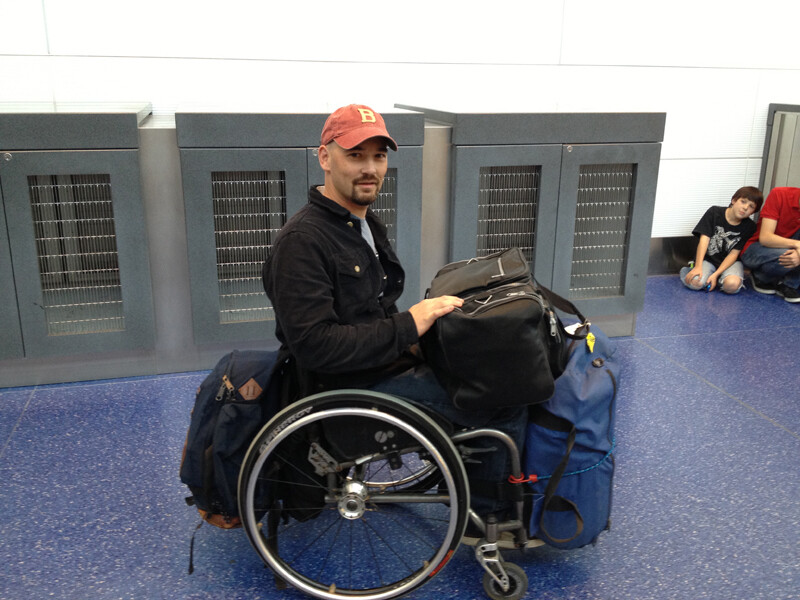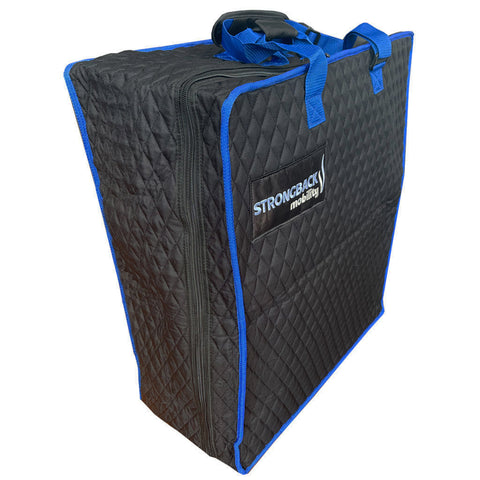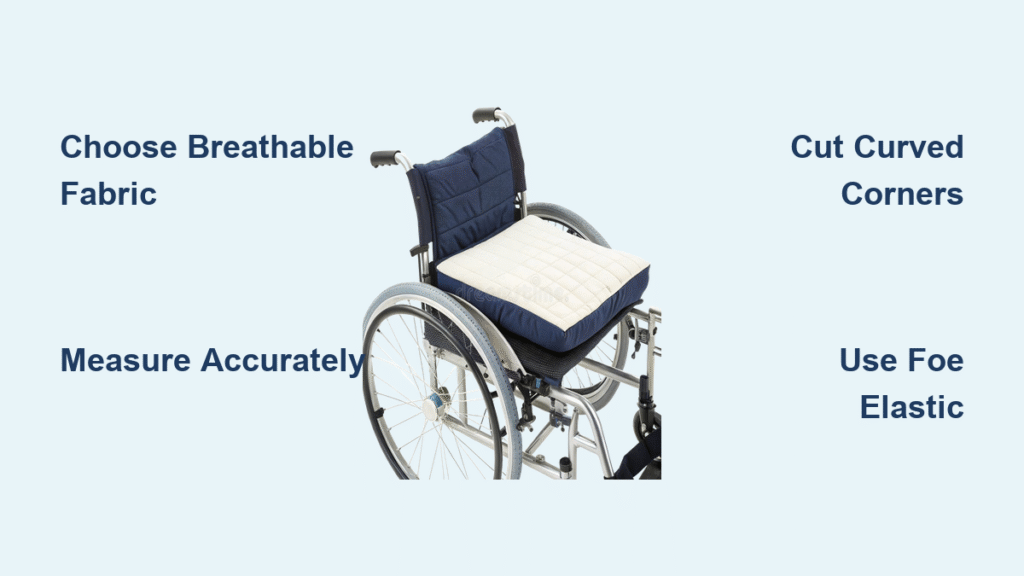Dragging a rolling suitcase while maneuvering your wheelchair feels like trying to solve two puzzles at once. One wrong move and your suitcase yanks you backward off a curb, or your overloaded lap bag slides mid-ramp. Traditional luggage systems ignore wheelchair physics entirely—rolling suitcases are designed for walking bodies that can brake with their feet, not for chairs where rear drag shifts your center of gravity dangerously. After testing setups across three continents, I’ve cracked the code: a strategic bag configuration that keeps airline limits under 50 lbs while preserving your chair’s agility for tight turns, wheelies, and backward climbs. You’ll learn exactly how to mount luggage without compromising stability or accessibility.
Most wheelchair travelers make the same critical error: treating luggage like walkers do. Hard-shell suitcases won’t flex around your footplate, single straps twist your frame, and rear-mounted weight turns gentle slopes into fall hazards. The solution isn’t brute strength—it’s physics. Your chair needs weight balanced front-to-back and kept low to maintain that sweet spot where your center of gravity sits just ahead of the rear axle. Get this right, and you’ll glide through airports, conquer cobblestone streets, and pop wheelies over curbs with all your gear intact.
Why Rolling Suitcases Make Wheelchair Travel Dangerous
Trying to tow a standard suitcase behind your wheelchair creates a physics nightmare. That wheeled bag becomes a pendulum—every bump or turn shifts its weight, yanking your chair backward. On a downward slope, a 25-lb suitcase can flip lightweight chairs. Uphill, it strains your shoulders as you fight to keep your center of gravity forward. Walkers use their feet to brake; you don’t have that luxury. The moment your suitcase wheel catches on a crack or curb, you’re fighting for balance instead of focusing on navigation.
Critical stability rules you must follow
– Front weight counters rear drag: Heavy items on your lap offset backpack weight
– Keep everything low: High-mounted bags raise your center of gravity, increasing tip risk
– Soft bags conform, hard cases don’t: Rigid suitcases won’t mold to your footplate curves
– Never exceed 50 lbs total: Airline limits exist for a reason—overweight fees hurt, but instability hurts more
Six-Bag System: Airline-Compliant Wheelchair Luggage Setup

Forget bulky suitcases. Professional wheelchair travelers use six soft bags that clip together into one airline-legal checked duffel. This system distributes weight front-to-back, keeps daily items reachable, and stays under 50 lbs. The magic is in the positioning—your lap carries core weight while rear bags balance without compromising wheelie ability.
| Bag | Position | Purpose | Max Weight |
|---|---|---|---|
| Maintenance pouch | Under seat | Spare tubes, tools, lights | 3 lbs |
| Everyday knapsack | Chair back | Keys, phone, daily essentials | 5 lbs |
| Cylindrical duffel | Feet/lap | Core clothes, shoes | 25 lbs |
| Rectangular bag | Lap over duffel | Organized gear (toiletries, docs) | 25 lbs |
| Medium backpack | Over knapsack | Electronics, overflow | Carry-on |
| Large hockey duffel | Stashed empty | Airport consolidation | 0 lbs (en route) |
How to Secure Bags Without Damaging Your Chair
- Bungee cords only through frame holes—never wrap around push-rims (causes rim warping)
- Double-loop attachment: Create an X-pattern with two bungees for knapsacks to prevent sway
- Velcro straps for lap bags: Secure duffel handles to footplate uprights, not your legs
- Color-coded quick-release clips: Red for TSA checks, blue for daily adjustments—no re-threading
Pro Tip: Test your setup on a quiet sidewalk first. Load bags with books to simulate weight, then attempt a wheelie. If your casters lift unevenly, shift 2 lbs from lap to backpack.
Four-Bag Backpacking System for Cobblestone Streets

For European hostels or South American buses, slim down to four bags that handle narrow aisles and uneven terrain. This version keeps valuables against your body and cuts total weight to 45 lbs—critical for crowded transit where theft risks soar.
Front-to-back bag sequence
– Fanny pack (front waist): Passport, cash, phone—always accessible without unpacking
– Cylindrical duffel (lap): 25–30 lbs of clothes (roll items tightly to prevent shifting)
– Medium backpack (chair back): Day bag with laptop, water bottle, rain jacket
– Tool pouch (under seat): Allen wrenches, tire levers, emergency tape
This configuration lets you weave through markets without snagging bags. The fanny pack’s front weight counters rear drag, while the lap duffel’s cylindrical shape won’t slide off your knees on inclines.
Step-by-Step: Mounting Luggage in 5 Minutes
Morning setup sequence
1. Clip maintenance pouch under seat using mini-carabiners through frame holes—ensure it clears rear wheels
2. Mount knapsack with two bungees in X-pattern: top clip at push-handle base, bottom at seat-back frame
3. Position cylindrical duffel on feet—press firmly against footplate so it can’t slide forward
4. Layer rectangular bag on lap, securing corners to duffel handles with velcro straps
5. Attach medium backpack over knapsack, buckles turned sideways for quick TSA removal
Critical check: Shake each bag. If it moves more than 1 inch, tighten bungees. Loose bags swing during turns, clipping your rear wheels and causing sudden stops.
Conquering Ramps and Curbs with Full Luggage
Backward ramp climb technique
– Bags on lap block forward lean? Reverse course. Tilt front casters slightly upward, plant drive wheels, and pull yourself backward in short strokes.
– Keep eyes over your shoulder—ask a bystander to spot you the first few times.
– Why it works: Rear drag becomes propulsion, and your center of gravity stays stable.
Curb drop without spills
1. Verify lap duffel is pressed against footplate (prevents forward slide)
2. Pop a controlled wheelie, pause 2 seconds to check luggage stability
3. Roll off curb smoothly—never jump with bags loaded
4. If unstable, remove lap bags first, clear curb, then reload
Warning: Hard suitcases fail here—they’ll slide off your lap during the wheelie pause. Soft duffels mold to your legs.
Five Critical Mistakes That Cause Falls
- Overloading front bags → Heavy lap weight makes casters shimmy and steering sluggish (max 30 lbs on lap)
- Single bungee straps → Creates torque that twists frame joints over time
- Hard-shell suitcases → Can’t conform to footplate curves, slides on inclines
- Ignoring airline weight limits → One 55-lb bag triggers fees AND destabilizes your chair mid-transit
- Mounting bags above seat height → Raises center of gravity, making wheelies impossible
On-the-Spot Fixes for Travel Emergencies
Suitcase wheel breaks?
– Strap the bag flat across your lap—soft duffels mold to your legs.
– Use a spare bungee as a tow line ONLY on smooth airport floors (never outdoors—causes tipping).
TSA disassembles your setup?
– Keep the large hockey duffel empty in your backpack. At gate check, consolidate all bags into it.
– Gate agents rarely weigh personal items—keep knapsack and fanny pack as “carry-ons.”
Sudden downpour?
– Pack electronics in zip-top dry bags inside your duffel.
– Carry a rain cover sized for your cylindrical bag—drape it over entire lap load in 10 seconds.
Monthly Maintenance to Prevent Travel Disasters
- Bungee cord inspection: Replace when rubber shows white cracks (degraded cords snap under strain)
- Frame bolt check: Tighten footplate and caster stem bolts—they loosen under extra load
- Bag washing: Gentle cycle only; sidewalk grit abrades fabric over time
- Spare kit refresh: Restock tool pouch with 2 extra bungees, athletic tape, and sewing kit
Mastering this system transforms luggage from a hazard into an extension of your chair. You’ll move through airports faster than walkers with suitcases, navigate cobblestone streets with confidence, and keep your center of gravity stable no matter the terrain. The key isn’t strength—it’s strategic weight placement that works with your chair’s physics, not against it. Start practicing with books at home, and within a week, you’ll never dread baggage claim again.





